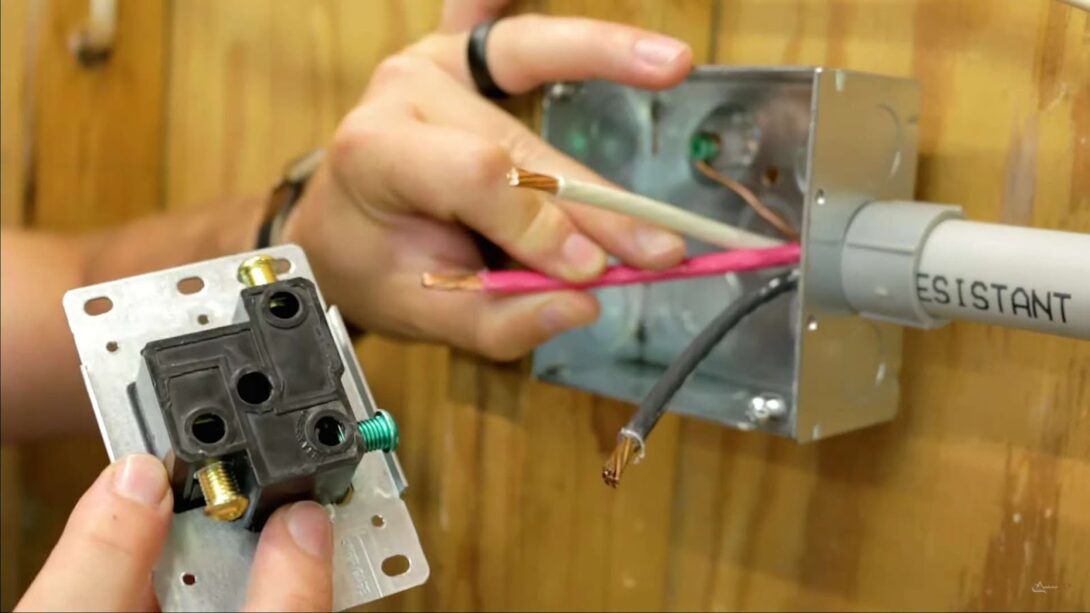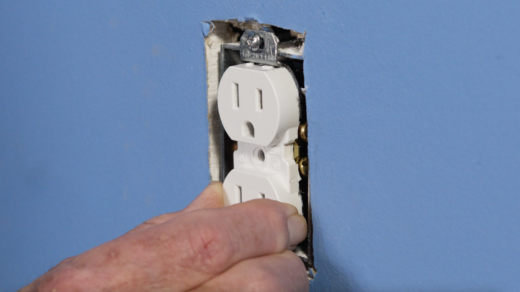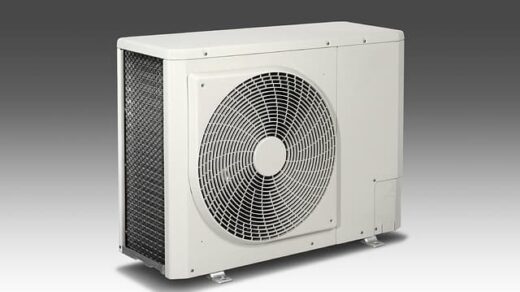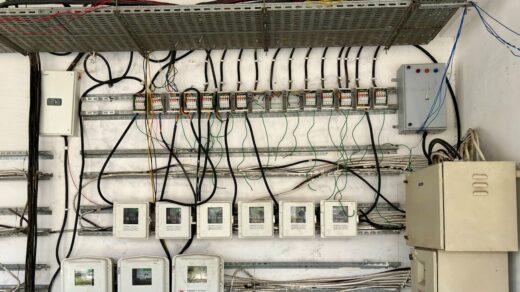50-amp outlets serve as electrical power sources engineered to supply elevated current levels tailored for particular equipment and appliances. Widespread in both residential and commercial environments, these receptacles facilitate the functioning of substantial tools, machinery, or recreational vehicles. Proficiency in correctly wiring them guarantees safety and the efficient operation of these devices. In this article, we will delve deeper into the intricacies of 50-amp outlets, exploring their essential features, applications, and the crucial steps to ensure their safe and efficient installation.
Expanding on the Uses of 50 Amp Outlets
In today’s world, our growing appetite for electricity necessitates the use of 50 amp outlets in various settings. These versatile power receptacles are no longer limited to residential applications but are also crucial in commercial and recreational environments. Here are some expanded uses of 50 amp outlets, shedding light on their diverse applications:
RV Parks for Large Motorhomes
- Powering the Modern RVs: 50 amp outlets are a lifeline for the modern, amenity-laden recreational vehicles (RVs) that have become a popular choice for travelers. These outlets provide the necessary electrical capacity to run multiple appliances simultaneously in larger motorhomes;
- Comfort and Convenience: From air conditioning systems to kitchen appliances and entertainment systems, RV enthusiasts can enjoy all the comforts of home while on the road, thanks to 50 amp outlets at RV parks;
- Travel Freedom: RV parks equipped with 50 amp outlets offer travelers the freedom to explore off-grid destinations while ensuring they have access to essential electrical power when needed.
Workshops for Heavy Machinery
- Industrial Powerhouses: Workshops and industrial facilities often require the immense power that 50 amp outlets can provide. They cater to heavy machinery and equipment used in manufacturing, construction, and fabrication;
- Efficiency and Productivity: With the ability to support high-capacity tools and machines, these outlets contribute to increased efficiency and productivity in various industries;
- Versatile Applications: From welding equipment to large compressors and woodworking machinery, 50 amp outlets are indispensable for professionals who rely on powerful tools to get the job done.
Residential Homes for High-Capacity Equipment or Electric Vehicle Charging Stations
- Electric Vehicle Charging: As the world transitions to electric vehicles (EVs), many homeowners are installing 50 amp outlets to accommodate Level 2 EV charging stations. These outlets deliver a faster charge than standard household outlets, reducing charging time significantly;
- Home Renovations: When homeowners embark on remodeling projects or additions to their homes, 50 amp outlets are increasingly integrated to support high-capacity appliances such as ovens, electric stoves, or spa tubs;
- Emergency Backup: In case of power outages, some homeowners install 50 amp outlets to connect portable generators, ensuring essential appliances continue to function during emergencies.
Elaborating on Safety Precautions for Wiring a 50 Amp Outlet
Prioritizing safety remains paramount when engaging in electrical installations, particularly when confronted with the formidable task of dealing with high-capacity 50 amp outlets. Presented below is an exhaustive compendium of safety measures that must be diligently adhered to prior to embarking on the wiring of a 50 amp outlet.
Deactivate the Power Supply
Begin the safety protocol by identifying and deactivating the main circuit breaker situated within your electrical panel. This pivotal action effectively severs the power supply to the entire circuit. It is an indisputable prerequisite, forming the cornerstone of your protection while undertaking outlet-related tasks.
Utilize the Appropriate Wire Gauge
In the context of wiring a 50 amp outlet, the selection of the correct wire gauge emerges as a matter of paramount significance. Conventionally, a 6-gauge wire assumes the mantle of recommendation due to its capability to safely accommodate the formidable current load. Employing a wire of lesser thickness stands as a potential hazard, as it can culminate in excessive heat generation and subsequent electrical perils.
Protective Gear
- Safety Gloves: Invest in high-quality insulated safety gloves to protect your hands from electrical shocks. These gloves should meet safety standards and provide a secure barrier against electric current;
- Goggles: Wear safety goggles to safeguard your eyes from any potential sparks, debris, or accidental contact with electrical components.
Avoid Wet Locations
Dry Work Area: Ensure that the area where you are installing the outlet is completely dry. Water and electricity don’t mix, and wet conditions can increase the risk of electrical shocks.
Prior to Usage Examination
Voltage Validation: It is imperative to always verify your electrical work’s integrity through the use of a voltage tester. This straightforward instrument serves to corroborate the proper wiring of an outlet and assures the absence of any potential electrical hazards. Only proceed with your task once the voltage tester provides confirmation of the outlet’s safety.
Additional Pointers
- Seek Professional Guidance: When in doubt regarding any facet of installing a 50-amp outlet, it is strongly advisable to seek the expertise of a licensed electrician. Electrical projects can be intricate, and professional counsel can substantially mitigate the likelihood of accidents;
- Adhere to Regulations and Procure Permits: Make certain that you adhere to all local building codes and secure any essential permits prior to embarking on the installation of a 50-amp outlet. This adherence to regulations and obtaining the requisite permits not only upholds the legality of your project but also safeguards its safety.
By diligently adhering to these safety measures, you can confidently and securely install a 50-amp outlet tailored to your specific requirements, all the while minimizing the potential for accidents or electrical mishaps.
Comprehensive Guide to Wiring a 50 Amp Outlet
Are you in search of guidance on setting up a 50 amp outlet to cater to your demanding electrical requirements? Whether you require it for your RV, electric vehicle charging station, or robust household appliances, this comprehensive guide will lead you through the installation process meticulously. Prior to commencing, it’s imperative to collect all the essential materials to guarantee a seamless installation experience.
Step 1: Gather Materials
Before diving into the installation, ensure you have all the required materials at your disposal. Here’s a list of what you’ll need:
Opt for a top-tier 50-amp outlet tailored precisely to your unique requirements. Employ robust 6-gauge wiring to effectively manage the 50-amp electrical load. Equip yourself with wire strippers to adeptly prepare the wires for connection, while screwdrivers will play a pivotal role in securing the outlet and fastening the wires. Don’t forget the indispensable voltage tester for verifying the outlet’s functionality. Remember, your electrical circuit’s core is the 50-amp circuit breaker, so ensure it aligns with your panel’s specifications.
Now, let’s embark on the installation process, prioritizing safety above all else. Begin by deactivating the power supply to the designated circuit. Proceed as follows for the installation of the 50-amp circuit breaker:
- Open the electrical panel with caution;
- Position the 50-amp circuit breaker meticulously within the panel;
- Confirm that it is firmly and securely in place.
Step 2: Prepare the Wires
Properly prepared wires are crucial for a safe and efficient electrical connection. Use wire strippers to strip approximately 1 inch of insulation from the wire ends, exposing the copper conductors.
Step 3: Connect the Wires
Now, let’s connect the wires to the 50 amp outlet:
- Red and Black Wires (Hot): Attach each wire to the gold screws on the outlet. These are your power conductors;
- White Wire (Neutral): Connect it to the silver screw on the outlet. This wire provides the return path for the current;
- Green or Bare Wire (Ground): This is your safety ground wire. Connect it to the green screw on the outlet.
Step 4: Attach to the Breaker Panel
With the outlet wired correctly, it’s time to connect the other end of the wire to your circuit breaker panel:
- Route the red and black wires to the appropriate slots on the circuit breaker;
- Connect the white wire to the neutral bus;
- Attach the green or bare wire to the ground bus.
Step 5: Secure the Outlet
Place the wired outlet into the electrical box and secure it using the provided screws. Ensure it sits flush with the box to maintain safety and aesthetics.
Step 6: Power On and Test
With all preparations now in order, the moment has arrived to activate the circuit breaker. Utilize a voltage tester to ascertain that the outlet is performing its function flawlessly. It is imperative to rigorously adhere to all safety protocols when conducting this essential testing.
For a seamless electrical installation, it is advisable to consistently consult the pertinent local electrical codes and regulations in your area. In instances where uncertainty looms over any phase of the process, it may be prudent to enlist the services of a certified electrician, ensuring both safety and compliance.
Picking the optimum location for your 50-amp outlet demands thoughtful consideration, factoring in its proximity to the electrical panel and ease of accessibility. Furthermore, it is crucial to verify that your 50-amp outlet is compatible with the plug type of the intended device.
In order to uphold safety standards, it is imperative to conduct regular examinations of your wiring and outlet for any indications of wear or damage. This proactive measure ensures the sustained safety of your electrical system.
Understanding Electrical Mishaps and Remedying Them
Electrical tasks might seem straightforward, but simple mistakes can lead to severe consequences. Gaining an understanding of the common pitfalls and how to sidestep them ensures both safety and efficiency.
1. Navigating the Pitfall of Inappropriate Wire Gauge
Why it’s a concern: Selecting an unsuitable wire gauge can result in overheating, inefficient power delivery, and potential fire risks.

Recommendations:
- Always consult local building codes and guidelines;
- Manufacturer guidelines can provide valuable insights. It’s always prudent to cross-check wire specifications with the device or appliance in question;
- For those unsure about wire gauges, consulting with an electrician or specialist can prevent costly mistakes.
2. The Dangers of Loose Electrical Connections
Why it’s a concern: If connections within electrical installations aren’t secure, it can lead to electrical arcing. This not only poses a fire hazard but can also damage equipment.
Tips for Prevention:
- Regularly inspect connections, especially after making changes to the setup;
- Use the right tools when tightening screws to ensure they’re firmly in place;
- Listen for any buzzing or crackling sounds – these can indicate a loose connection.
3. The Imperative of Grounding Electrical Systems
Why it’s a concern: Grounding ensures that in the event of a fault, the current has a safe path to the ground, preventing electric shock or fire.
Insights:
- A grounded system protects both people and devices;
- Not all devices need grounding, but when they do, it’s crucial not to skip or rush the process;
- Regularly check the grounding connections, especially after storms or renovations.
4. The Oversight of Bypassing Official Permits
Why it’s a concern: Ignoring the necessity of permits can lead to non-compliance with safety standards, legal complications, and even insurance issues.
Recommendations:
- Always familiarize oneself with local regulations before embarking on any electrical project;
- If in doubt, reach out to local authorities or professionals to understand the permit requirements better;
- Remember, the goal of these permits is to ensure that installations are safe and up to standard, safeguarding residents and property.
By addressing these common mistakes and following the provided recommendations, one can ensure a safe and efficient electrical environment. It’s always advisable to prioritize safety and adhere to recommended guidelines when working with electricity.
Conclusion
Installing a 50 amp outlet may appear daunting at first glance; however, armed with the appropriate tools and a strict adherence to safety protocols, this undertaking can be executed with precision. Whether for residential purposes, workshops, or recreational vehicle parks, ensuring a flawless installation promises heightened efficiency and safety. If uncertainty ever shrouds a particular step or process, it is wise to contemplate enlisting the services of a qualified professional.








